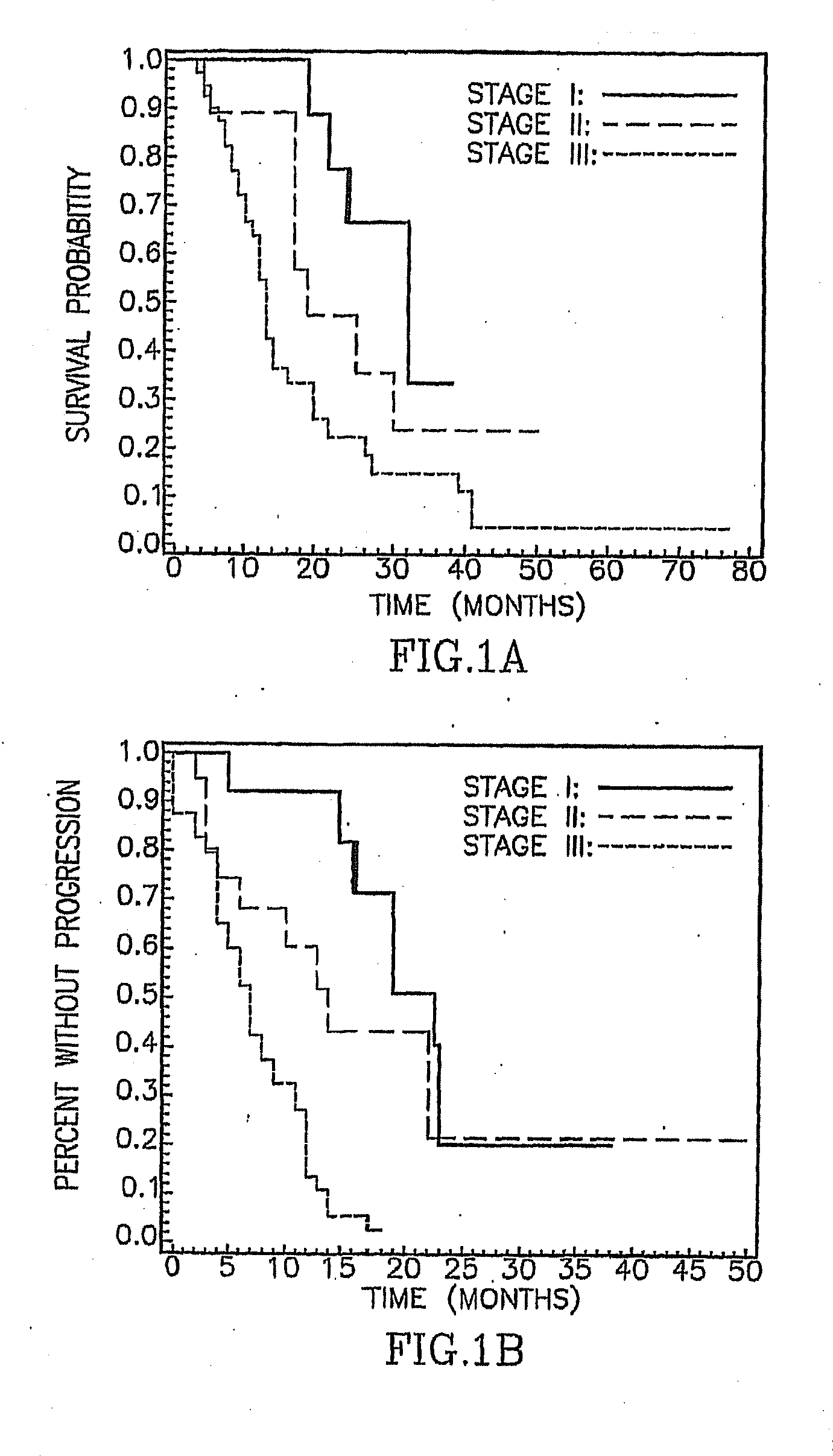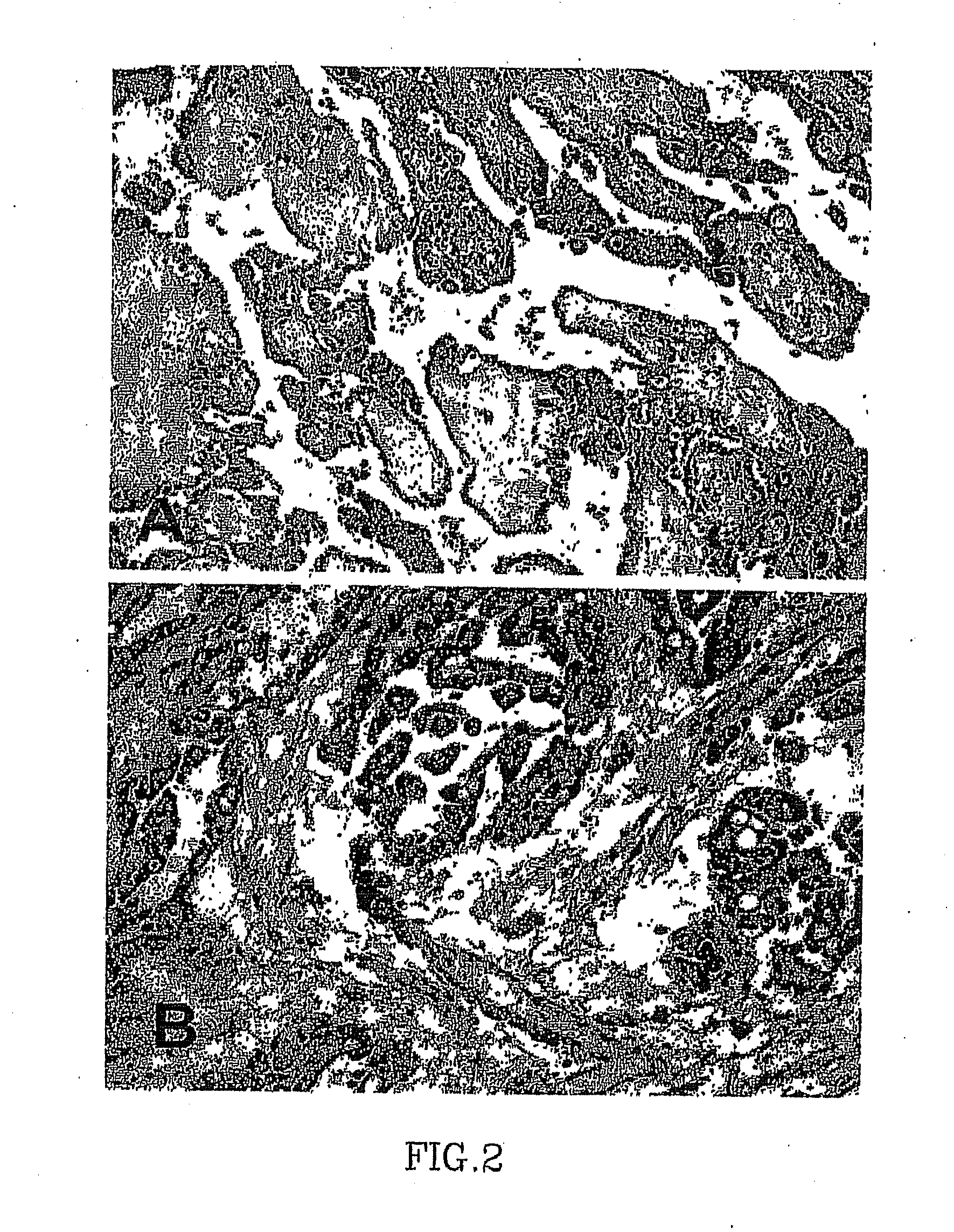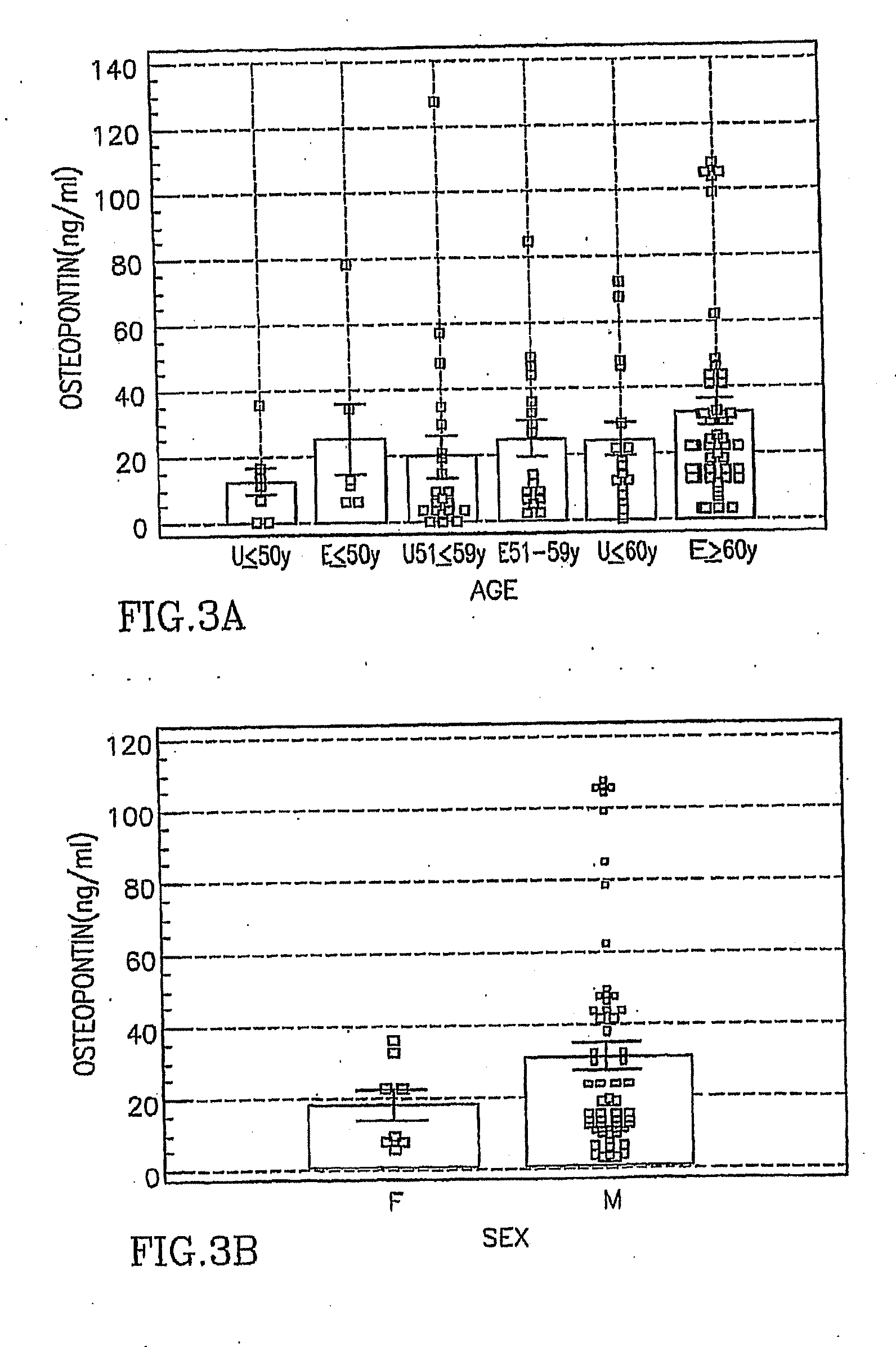Asbestos Exposure, Pleural Mesothelioma and Osteopontin Levels
a technology of which is applied in the field of asbestos exposure, pleural mesothelioma and osteopontin levels, can solve the problems of no economically feasible, validated screening methods, and 1.3 million estimated construction workers' hazard of asbestos
- Summary
- Abstract
- Description
- Claims
- Application Information
AI Technical Summary
Benefits of technology
Problems solved by technology
Method used
Image
Examples
example 1
Patient Populations
Asbestos-Exposed Group
[0061]Serum was obtained after written informed consent from 69 persons with a history of asbestos exposure and / or radiographic changes consistent with asbestosis at the Center for Occupational and Environmental Medicine, Royal Oak, Mich. from July 2004-September 2004. Entry criteria for this cohort were similar to that described by Cullen (Cullen M R, Am J Epidemiol 2005; 161(3):260-270). Asbestos exposure and its duration were documented using the ATS—Division of Lung Diseases (DLD)-78 Adult questionnaire (Ferris B G. Am Rev Respir Dis 1978; 118(6 Pt 2):1-120).
[0062]Subjects were either employed in a trade with established habitual asbestos exposure for which there is a documented increased risk of asbestos related diseases (including insulation, sheet metal work, plumbing, plasterboard application, ship fitting, ship electrical work, boiler making, or ship scaling) (Selikoff I J, et al. CA Cancer J Clin 1984; 34(1):48-56) or had occupation...
example 2
Survival by Stage of Pleural Mesothelioma
[0068]To determine whether the mesothelioma patients in this study had outcomes similar to those in other series, survival and time to progression curves based on IMIG staging status were generated. FIG. 1 shows significant differences in survival and progression according to stage as follows: (A) median survivals for the 13 Stage I, 20 Stage II, and 40 Stage III patients were 32, 19, and 13 months, respectively, p=0.006 by log rank test; (B) median time to progression for the 13 Stage I, 20 Stage II, and 40 Stage III patients were 23, 14, and 7 months, respectively, p<0.001 by log rank test. These results are consistent with those of other studies that used the IMIG staging system (Pass H I, et al. J Thorac Cardiovasc Surg 1998; 115(2):310-317; Rusch V W, et al. Ann Thorac Surg 1999; 68(5):1799-1804; Rusch V W, et al. J Thorac Cardiovasc Surg 1996; 111(4):815-825).
example 3
[0069]Immunohistochemistry was performed on a multi-tissue pleural mesothelioma array, consisting of 2-mm representative areas of resected tumor and normal tissue controls. Thirty-eight of the 76 pleural tumors studied for serum osteopontin were spotted on the array. The other 38 were not available at the time of array construction. Immunohistochemistry was performed using the standard ABC technique. The primary antibody, a monoclonal anti-osteopontin antibody (clone OP3N, Vector Laboratories, Burlingame, Calif.), was applied to the array at 1:150 dilution, for 90 minutes at room temperature. The secondary anti mouse IgG (Vector Laboratories, Burlingame, Calif.) was applied at 1:200 dilution for 30 minutes at room temperature. A positive control and a negative control (obtained by omitting the secondary antibody) were included in each run. Cases were scored separately for (1) intensity (I) (scale of 1 to 3) and (2) extent (E) of positive tumor cells (1.ltoreq.10%...
PUM
 Login to View More
Login to View More Abstract
Description
Claims
Application Information
 Login to View More
Login to View More - R&D
- Intellectual Property
- Life Sciences
- Materials
- Tech Scout
- Unparalleled Data Quality
- Higher Quality Content
- 60% Fewer Hallucinations
Browse by: Latest US Patents, China's latest patents, Technical Efficacy Thesaurus, Application Domain, Technology Topic, Popular Technical Reports.
© 2025 PatSnap. All rights reserved.Legal|Privacy policy|Modern Slavery Act Transparency Statement|Sitemap|About US| Contact US: help@patsnap.com



